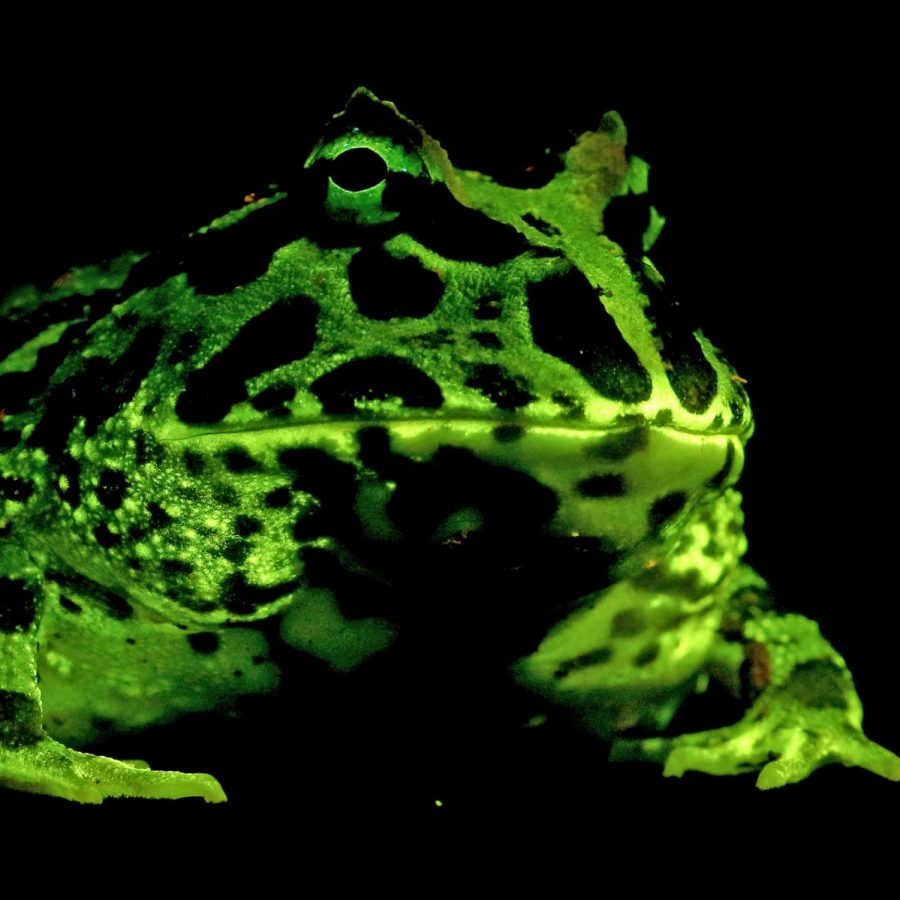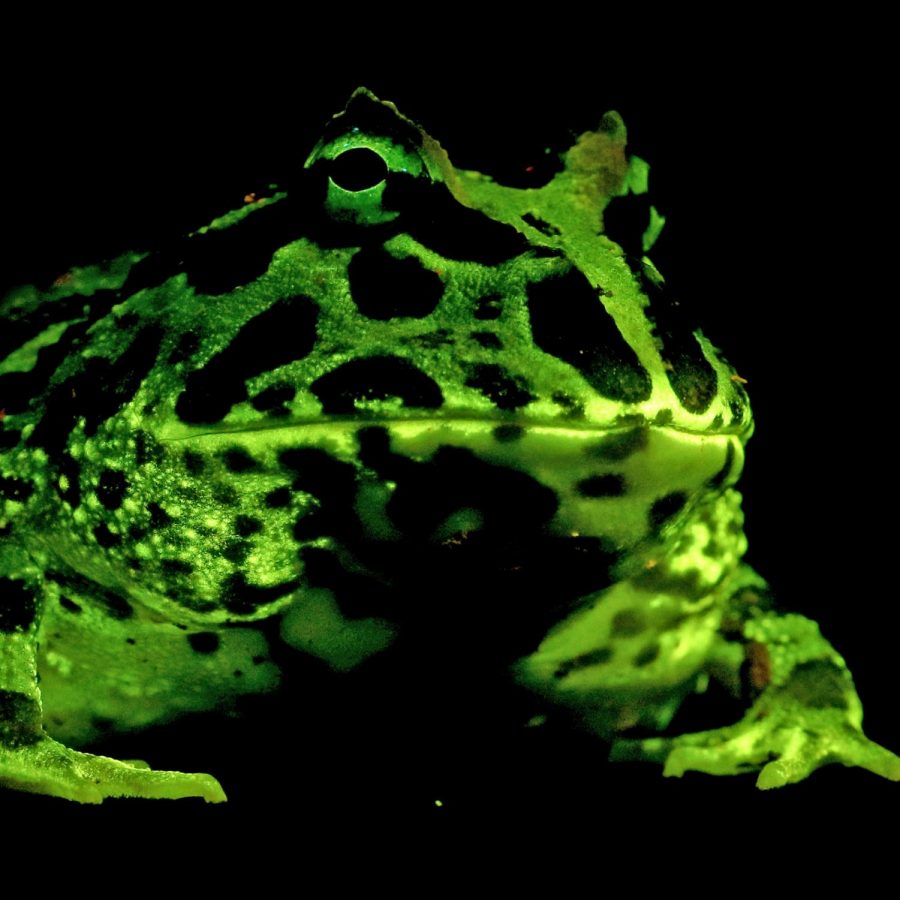Amphibians Can Glow in Blue and UltraViolet Light
In biological research sometimes less obvious characteristics of specimens go unnoticed for a long time, while other easily observable characteristics are studied heavily and in depth. For example, this occurred this past February when researchers discovered that amphibians have been keeping a sec
ret from humans; they are able to glow under blue and ultraviolet light.
The amphibian’s ability to glow under blue and ultraviolet light is called biofluorescence. Biofluorescence occurs when organisms re-emit light that has been absorbed into another wavelength that is visible to humans. The colors and intensities of the light vary in different types of amphibians. Some amphibians emit green, red, or a blue glow. This is theorized to happen because of protein compounds in the skin, secretion, bones, or a pigment-containing and light-reflecting cells. While many are familiar with the term bioluminescence, it is important to note that bioluminescence is not the same as biofluorescence. Bioluminescence is when
an organism generates the light from chemicals that they produce. With biofluorescence, light is not produced; it is re-emitted.
It is theorized that amphibians have the ability of biofluorescence because of early amphibians in their evolutionary history. This ability was probably evolved to help them locate e
ach other when there isn’t much light, camouflage, predator mimicry and mating.
Some characteristics that are so simple can take so long to discover. I wonder what other simple characteristics in organisms are yet to be unveiled.
Sources:
- https://www.sciencemag.org/news/2020/02/newts-and-frogs-light-glow-sticks-under-right-light#
- https://www.cbsnews.com/news/amphibians-glow-in-the-dark-biofluorescence-scientific-study-today-2020-02-27/
- https://www.wired.com/story/amphibians-glow/Frog glowing under blue light. Photo courtesy of the nytimes.com.

Sam Medina is a young artistic Freshman who attends Roxbury High School in New Jersey. She began showing an interest in the arts at a very young age. Recently,...







